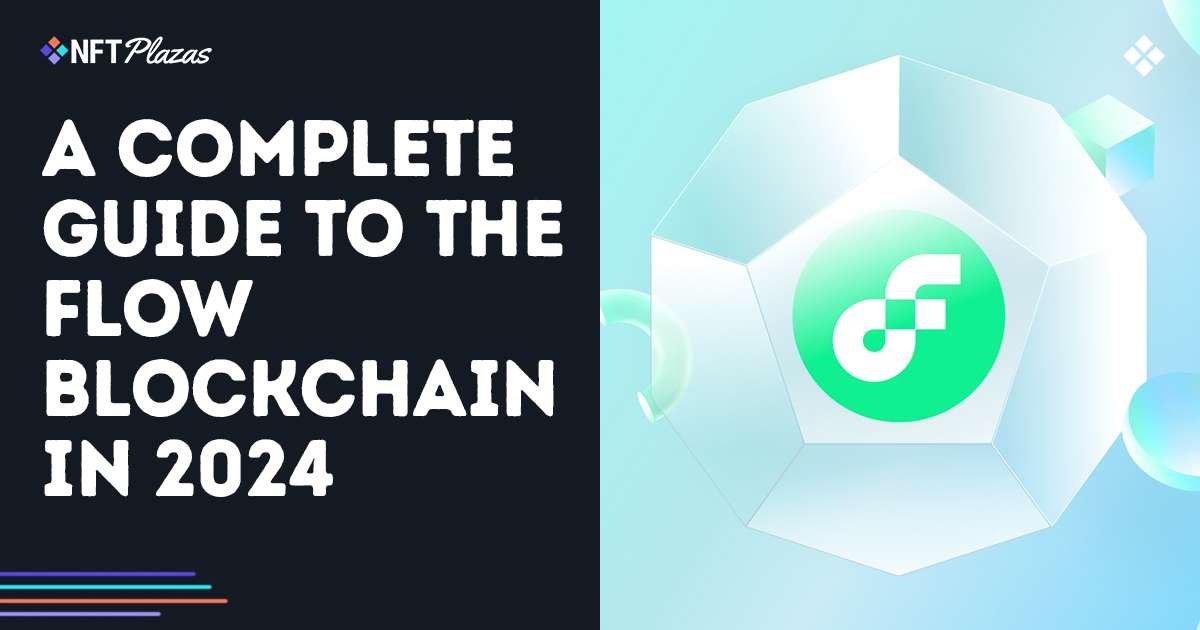Following the success of CryptoKitties, developers Dapper Labs knew that for Web3 gaming to grow, an alternative to Ethereum was needed: enter Flow.
Flow was the first major competitor to Ethereum for games, apps and experiences, and has powered many of the most mainstream blockchain apps to date.
Despite Ethereum Layer-2 blockchains taking off, and competing Layer-1 chains gaining traction, Flow is still at the top of the industry – but what makes Flow stand out, and how is it still the chain to beat?
Here’s our complete guide to the Flow blockchain in 2024.
What is Flow?
Created by Dapper Labs – the team behind CryptoKitties – Flow is a Layer-1 blockchain designed to support high-traffic games, experiences, and digital collectibles.
The popularity of CryptoKitties hit Ethereum’s speed, reliability and user fees hard, so Dapper Labs built Flow – a modern blockchain that could handle the demands of their popular blockchain game.
Flow is powered by the $FLOW token, a native cryptocurrency that’s involved in transactions, staking, and network governance
On top of CryptoKitties, Flow is home to some of the top blockchain-based games, apps and platforms – including officially-licensed titles such as NBA Top Shot, NFL All Day, and UFC Strike.
Whilst many of these are in-house products, Flow has plenty of documentation for external developers, and has partnered with third-party teams to create a full ecosystem of apps, tools and platforms built on Flow.
Flow claims to be the “home of consumer Web3” – and its partnerships, products and growth make that a legitimate claim to make.

How does Flow work?
Dapper Labs think of Flow not as an alternative solution, but as a better solution.
Flow utilises a unique multi-role architecture. Instead of splitting the network into shards, Flow divides the processing of transactions into four specialized roles:
Collection Nodes: manage transaction dataConsensus Nodes: order, validate and sequence transactionsExecution Nodes: process transactionsVerification Nodes: keep the network in-sync and secure
This allows Flow to process a large number of transactions quickly, reliably, and securely – and it’s proven effective, keeping the blockchain both developer-friendly and strong in performance.
As a Proof-of-Stake (PoS) network, users can either run a node or delegate their $FLOW holdings to existing nodes to earn rewards. Whilst many of Flow’s leading products come direct from Dapper Labs, governance of the blockchain is becoming increasingly decentralized, with decision-making resting with token holders.
For developers, Flow uses a unique programming language called Cadence, which is optimized for digital assets and smart contracts. It offers a range of tools and documentation to make building on Flow simpler, with the hope that Flow will be the home for mainstream Web3 apps.

The History of Flow
The idea for Flow followed the success of CryptoKitties in 2017. Flow’s mainnet launched in 2020 – and it wasn’t long before the chain exploded in popularity.
NBA Top Shot grabbed mainstream attention in 2021, being the first major Web3 app to do so. This popularity led to short-lived partnerships with Instagram and Facebook in 2022, and the launch of NFL All Day, UFC Strike and many more officially-licensed products.
Recent years have seen Flow face increased competition from Ronin, Base and Avalanche – though no blockchain has yet to match its mainstream success.
It hasn’t all been plain sailing. In June 2024, Dapper Labs reached a $4 million USD settlement with NBA Top Shot holders over a lawsuit alleging that Top Shot collectibles are securities – and it remains unclear what impact this could have on other officially-licensed titles on Flow.
Nevertheless, Flow continues to rise in popularity – and its recent Crescendo update, which brought full EVM support, is just the latest in many successes for the Flow ecosystem at large.





